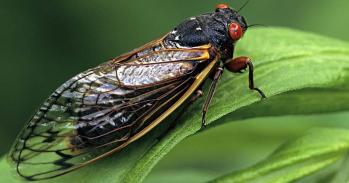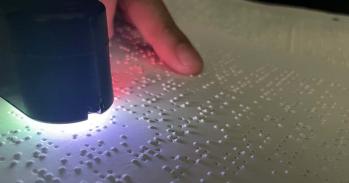Footage shows how a little creature propels itself off water.
Footage shows how a little creature propels itself off water.
If we want to make small robotic vehicles that move under water, this is how we would have to design propellers or oars.
Professor Malcolm Burrows, from the University of Cambridge’s Department of Zoology
An insect not much bigger than a grain of rice is able to repeatedly jump on the surface of water using specialised paddles on their hind legs, new research reveals. The findings were reported today, 03 December, in the journal Current Biology.
The pygmy mole cricket, which is really more closely related to a grasshopper than a cricket, is only 5mm (1/4 inch) long and weighs less than 10mg. They live in burrows that they dig into the muddy banks alongside fresh water, to include creeks and ponds, in more tropical habitats. On land they can jump as far as 1 metre and as high as 0.7 metre, but accuracy is sacrificed for speed and they often end up in the nearby water.
Professor Malcolm Burrows, from the University of Cambridge’s Department of Zoology, first encountered pygmy mole crickets (family Tridactylidae) while eating his lunch near a pond in Cape Town, South Africa. Upon hearing sporadic noises coming from the water, he observed something he had never seen before in his 48 years of research – an insect that was jumping on the surface of the water.
After collecting a few of the creatures and bringing them back to the lab, he analysed them jumping using a high speed camera. He and his engineer colleague, Dr Gregory Sutton, discovered that, unlike other animals that use the surface tension of water such as pond skater insects (also known as water striders) or basilisk (Jesus) lizards to traverse water, the pygmy mole cricket relies on its powerful hind legs to thrust a small ball of water down to propel itself off the surface.
Professor Burrows said: “For small insects, water can be a deadly, sticky trap; water grabs and holds an insect, offering it as an appetising snack for an alert fish. Other animals use surface water tension, keeping a small layer of air between their feet and the water. However, if their feet get wet, they will be pulled into the water and drown. Pygmy mole crickets turn the stickiness of water to their advantage and use this property to enable jumping.”
http://www.youtube.com/watch?v=dUS5Jb17RCE
In order to escape the water, where they are easy prey for fish, the pygmy mole cricket rapidly (the legs are extended in about 1 millisecond at an angular velocity of 130,000 degrees per second) push their powerful hind legs into the water. As they push downward, specialised spring-loaded paddles and spurs fan out to increase the surface area (which is increased by 2.4 times). This enables them to propel a ball of water downwards, launching them upwards into the air. Once the thrust has been applied, the paddles then rapidly snap closed to reduce the drag. On water, the jumps can reach distances of 33mm (5.4 times the length of their body) and 100mm high.
The researchers believe that the pygmy mole crickets’ unique technique for jumping on water could be used to inform the development of small robots that could be used in water.
Professor Burrows added: “If we want to make small robotic vehicles that move under water, this is how we would have to design propellers or oars.”
This work is licensed under a Creative Commons Licence. If you use this content on your site please link back to this page.





